PH8151-unit2 - Lecture notes 2 PDF

| Title | PH8151-unit2 - Lecture notes 2 |
|---|---|
| Author | Noufiya Nizam |
| Course | computer science engg |
| Institution | Anna University |
| Pages | 45 |
| File Size | 2.5 MB |
| File Type | |
| Total Downloads | 86 |
| Total Views | 123 |
Summary
IT IS CLEAR LECTURE NOT ABOUT ENGINEERING PHYSICS. IT WILL BE HELP FULL FOR YOUR EXAM...
Description
www.AUNewsBlog.net PH8151 UNIT II
ENGINEERING PHYSICS WAVES AND FIBER OPTICS
Oscillatory motion – forced and damped oscillations: differential equation and its solution – plane progressive waves – wave equation. Lasers : population of energy levels, Einstein’s A and B coefficients derivation – resonant cavity, optical amplification (qualitative) – Semiconductor lasers: homojunction and heterojunction – Fiber optics: principle, numerical aperture and acceptance angle -types of optical fibres (material, refractive index, mode) – losses associated with optical fibers – fibre optic sensors: pressure and displacement. Introduction:
WAVES:
A wave is a disturbance which propagates energy and momentum from one place to the other without the transport of matter. (1) Necessary properties of the medium for wave propagation : (i) Elasticity : So that particles can return to their mean position, after having been disturbed. (ii) Inertia : So that particles can store energy and overshoot their mean position. (iii) Minimum friction amongst the particles of the medium. (iv) Uniform density of the medium. (2) Characteristics of wave motion : (i) It is a sort of disturbance which travels through a medium. (ii) Material medium is essential for the propagation of mechanical waves. (iii) When a wave motion passes through a medium, particles of the medium only vibrate simple harmonically about their mean position. They do leave their position and move with the disturbance. (iv) There is a continuous phase difference amongst successive particles of the medium i.e., particle 2 starts vibrating slightly later than particle 1 and so on. (v) The velocity of the particle during their vibration is different at different position. (vi) The velocity of wave motion through a particular medium is constant. It depends only on the nature of medium not on the frequency, wavelength or intensity. (vii) Energy is propagated along with the wave motion without any net transport of the medium. (3) Mechanical waves : The waves which require medium for their propagation are called mechanical waves. Example : Waves on string and spring, waves on water surface, sound waves, seismic waves. (4) Non-mechanical waves : The waves which do not require medium for their propagation are called non- mechanical or electromagnetic waves. Examples : Light, heat (Infrared), radio waves, - rays, Xrays etc. (5) Transverse waves : Particles of the medium execute simple harmonic motion about their mean position in a direction perpendicular to the direction of propagation of wave motion. (i) It travels in the form of crests and troughs. (ii) A crest is a portion of the medium which is raised temporarily above the normal position of rest of the particles of the medium when a transverse wave passes through it. (iii) A trough is a portion of the medium which is depressed temporarily below the normal position of rest ofthe particles of the medium, when transverse wave passes through it. (iv) Examples of transverse wave motion : Movement of string of a sitar or violin, movement of the membrane of a Tabla or Dholak, movement of kink on a rope, waves set-up on the surface of water. (v) Transverse waves can be transmitted through solids, they can be setup on the surface of liquids. But they cannot be transmitted into liquids and gases.
www AUNewsBlog net
www AUNewsBlog net (6) Longitudinal waves : If the particles of a medium vibrate in the direction of wave motion, the wave is called longitudinal. (i) It travels in the form of compression and rarefaction. (ii) A compression (C) is a region of the medium in which particles are compressed. (iii) A rarefaction (R) is a region of the medium in which particles are rarefied. (iv) Examples: sound waves travel through air in the form of longitudinal waves, Vibration of air column in organ pipes are longitudinal, Vibration of air column above the surface of water in the tube of resonance apparatus are longitudinal. (v) These waves can be transmitted through solids, liquids and gases because for these waves propagation, volume elasticity is necessary. (7) One dimensional wave : Energy is transferred in a single direction only. Example : Wave propagating in a stretched string. (8) Two dimensional wave : Energy is transferred in a plane in two mutually perpendicular directions. Example : Wave propagating on the surface of water. (9) Three dimensional wave : Energy in transferred in space in all direction. Example : Light and sound waves propagating in space.
www AUNewsBlog net
www AUNewsBlog net
www AUNewsBlog net
www AUNewsBlog net
Displacement in SHM:
www AUNewsBlog net
www AUNewsBlog net
Free, Forced And Damped Oscillations Oscillation is a measure of some repetitive variation, as a function of time. It can be measured with respect to a state of equilibrium. If the oscillation is mechanical in nature it is referred to as vibration The most common and simplest example for oscillation is the motion of a simple pendulum. The motion of alternating current although electrical is also an example of an oscillatory motion.
www AUNewsBlog net
www AUNewsBlog net If a mechanical motion is such that, the restoring force acts in the direction opposite to that of displacement of the object and is proportional to it, is called a simple harmonic motion. Again, the motion of a simple pendulum is a perfect example for this, where if it is displaced to one direction, the restoring force acts in the opposite direction. There are three main types of Simple Harmonic Motion Free Oscillation Forced Oscillation Damped Oscillations Free Oscillations
• • •
These have a constant amplitude and constant period and the main factor is that they are not under any external influences. For the amplitude to remain constant, the system has no damping. But this is possible only in theory as damping will always occur. Damping is the reduction in amplitude (energy loss from the system) due to overcomings of external forces like friction or air resistance and other resistive forces. Examples (a) Vibrations of tuning fork (b) Vibrations in a stretched string (c) Oscillations of simple pendulum (d) Air blown gently across the mouth of a bottle.
In such a system, the amplitude, frequency, and energy all remain constant. Forced Oscillations When a body oscillates by being influenced by an external periodic force, it is called forced oscillation. Here, the amplitude of oscillation, experiences damping but remains constant due to the external energy supplied to the system. For example, when you push someone on a swing, you have to keep periodically pushing them so that the swing doesn’t reduce. i.e.,When a vibrating body is maintained in the state of vibration by a periodic force of frequency (n) other than its natural frequency of the body, the vibrations are called forced vibrations. The external force is driver and body is driven. The body is forced to vibrate with an external periodic force. The amplitude of forced vibration is determined by the difference between the frequencies of the driver and the driven. The larger the frequency difference, smaller will be the amplitude of the forced oscillations. Examples : Sound boards of stringed instruments execute forced vibration, Press the stem of vibrating tuning fork, against tabla. The tabla suffers forced vibration. Resonance In the case of forced vibration, if the frequency difference is small, the amplitude will be large as shown in figure. Ultimately when the two frequencies are same, amplitude becomes maximum.This is a special case of forced vibration.
www AUNewsBlog net
www AUNewsBlog net If the frequency of the external periodic force is equal to the natural frequency of oscillation of the system, then the amplitude of oscillation will be large and this is known as resonance.
Advantages (i) Using resonance, frequency of a given tuning fork is determined with a sonometer. (ii) In radio and television, using tank circuit, required frequency can be obtained. Disadvantages (a) Resonance can cause disaster in an earthquake, if the natural frequency of the building matches the frequency of the periodic oscillations present in the Earth. The building begins to oscillate with large amplitude thus leading to a collapse. (b) A singer maintaining a note at a resonant frequency of a glass, can cause it to shatter into pieces. Damped Oscillations
Oscillation, where the amplitude of a body keeps reducing with time is called a damped oscillation. Along with the decrease in amplitude, the energy of the system also keeps decreasing. Most of the oscillations in air or in any medium are damped. When an oscillation occurs, some kind of damping force may arise due to friction or air resistance offered by the medium. So, a part of the energy is dissipated in overcoming the resistive force. Consequently, the amplitude of oscillation decreases with time and finally becomes zero. Such oscillations are called damped oscillations as shown in figure. Examples : (a) The oscillations of a pendulum (b) Electromagnetic damping in galvanometer (oscillations of a coil in galvanometer) (c) Electromagnetic oscillations in tank circuit.
www AUNewsBlog net
www AUNewsBlog net There are two types of damping Natural Damping
and
Artificial Damping
Wave equation of Damped vibration: Fractional force, acting on a body opposite to the direction of its motion , is called damping force. Damping force reduces the velocity and the Kinetic Energy of the moving body. Damping or dissipative forces generally arises due to the viscosity or friction in the medium and are non conservative in nature. • When velocities of body are not high, damping force is found to be proportional to velocity v of the particle i.e., Fd=-γv where, γ is the damping constant. • If we take damping into consideration for an oscillator then oscillator experiences (i) Restoring Force :- FR = -kx (ii) Damping Force :- FD = -γv where, x is the displacement of oscillating system and v is the velocity of this dispalcement.Thus equation of motion of damped harmonic oscillator is
•
•
where,r=(γ/2m) and ω2=k/m Solution of above equation is of the form x=Ae-rtcos(ω't+φ) -------------(1) where, ω'=√(ω2-r2) is the angular frequency of the damped oscillator. In equation (1), x is a function of time but it is not a periodic function and because of the damping factor e-rt, this function decreases continuously with time.
Plane progressive wave A progressive wave is defined as the onward transmission of the vibratory motion of a body in an elastic medium from one particle to the successive particle. (1) These waves propagate in the forward direction of medium with a finite velocity. (2) Energy and momentum are transmitted in the direction of propagation of waves without actual transmission of matter. (3) In progressive waves, equal changes in pressure and density occurs at all points of medium. (4) Various forms of progressive wave function: (i) y = A sin (ω t – kx) (iv) y = A sin 2π / λ (vt – x)
(ii) y = A sin (ω t – 2π / λ x ) (v) y = A sin ω ( t - x / v )
www AUNewsBlog net
(iii) y = A sin 2π [ t / T - x / λ ]
www AUNewsBlog net where y = displacement, A = amplitude, ω = angular frequency, n = frequency, k = propagation constant T = time period, λ = wave length, v = wave velocity, t = instantaneous time x = position of particle from origin WAVE EQUATION
The simplest type of wave is the one in which the particles of the medium are set into simple harmonic vibrations as the wave passes through it as shown in the figure. The wave is then called a simple harmonic wave. Consider a particle P in the medium. The displacement at any instant of time is given by
Where A is the amplitude, w is the angular frequency of the wave. Consider a particle P0 at a distance x from the particle P on its right. Let the wave travel with a velocity v from left to right. Since it takes some time for the disturbance to reach P, its displacement can be written as
Where is the phase difference between the particles P and P0. We know that a path difference of λ corresponds to a phase difference of 2 radians. Hence a path difference of x corresponds to a phase difference of
Substituting equation (1.5) in equation (1.4) We get,
www AUNewsBlog net
www AUNewsBlog net
Similarly, for a particle at a distance x to the left of 0 (negative direction), the equation for the displacement is given by
DIFFERENTIAL EQUATION FOR WAVE MOTION Differentiating equation (1.7) with respect to x, We get,
The velocity of the particle whose displacement y is represented by equation (1.7), is obtained by differentiating it with respect to t, since velocity is the rate of change of displacement with respect to time.
www AUNewsBlog net
www AUNewsBlog net Comparing equations (1.8) and (1.9) we get,
Particle velocity = wave length x slope of the displacement curve or strain Differentiating equation (1.8),
Differentiating equation (1.9)
Comparing equation (1.11) and (1.12) we get,
This is the differential equation of wave motion. LASERS
The term `LASER' stands for "Light Amplification by Stimulated Emission of Radiation". It is a device which produces a powerful, monochromatic (single colour) and coherent beam of light. It can travel over long distances without much loss of intensity. It amplifies light waves. There are solids, liquids, gases and semiconductor lasers. They are used in telecommunication, medicine, biology and computers. CHARACTERISTICS OF LASER The following characteristics distinguish a laser beam from an ordinary light. They are i) ii) iii) iv)
High degree of coherence, High intensity, High directionality and High monochromaticity.
www AUNewsBlog net
www AUNewsBlog net i)
High degree of coherence
The wave trains which are identical in phase and direction are called coherent waves. Since all the constituent photons of laser beam possess the same energy, momentum and propagate in the same direction, the laser beam is said to be highly coherent. (ii)
High Intensity
Due to the coherent nature of laser, it has the ability to focus over a small area of 10-6 cm2. Laser beam has extremely high concentration of its energy over small area. Even a 1 watt laser beam is more intense that 100 watt ordinary incandescent lamp. (iii)
High directionality
An ordinary light source emits light in all possible directions. Since laser travels as a parallel beam, it can travel over a long distance without spreading. The angular spread of a laser beam is less than 0.01 mm for every metre. This reveals the directionality of the laser beam. But in the case of ordinary light beam, the spread is about 1 metre for every one metre that light traverses. (iv)
High Monochromaticity
The light from a normal monochromatic source spreads over a range of wavelength of the order 100 nm. But the spread is of the order of 1 nm for laser. Hence, laser is highly monochromatic, i.e., it can emit light of single wavelength. POPULATION OF ENERGY LEVELS:
Population inversion is the process of achieving greater population of higher energy state as compared to the lower energy state. Population inversion technique is mainly used for light amplification. The population inversion is required for laser operation. Consider a group of electrons with two energy levels E1 and E2. E1 is the lower energy state and E2 is the higher energy state. N1 is the number of electrons in the energy state E1. N2 is the number of electrons in the energy state E2. The number of electrons per unit volume in an energy state is the population of that energy state.
www AUNewsBlog net
www AUNewsBlog net
Population inversion cannot be achieved in a two energy level system. Under normal conditions, the number of electrons (N1) in the lower energy state (E1) is always greater as compared to the number of electrons (N2) in the higher energy state (E2). N1 > N2 When temperature increases, the population of higher energy state (N2) also increases. However, the population of higher energy state (N2) will never exceeds the population of lower energy state (N1). At best an equal population of the two states can be achieved which results in no optical gain. N1 = N2 Therefore, we need 3 or more energy states to achieve population inversion. The greater is the number of energy states the greater is the optical gain. There are certain substances in which the electrons once excited; they remain in the higher energy level or excited state for longer period. Such systems are called active systems or active media which are generally mixture of different elements. When such mixtures are formed, their electronic energy levels are modified and some of them acquire special properties. Such types of materials are used to form 3-level laser or 4-level laser. 3-LEVEL LASER Consider a system consisting of three energy levels E1, E2, E3 with N number of electrons.We assume that the energy level of E1 is less than than E2 and E3, the energy level of E2 is greater than E1 and less than E3, and the energy level of E3 is greater than E1 and E2.It can be simply written as E1 < E2 < E3. That means the energy level of E2 lies in between E1 and E3.
www AUNewsBlog net
www AUNewsBlog net
The energy level E1 is known as the ground state or lower energy state and the energy levels E2 and E3 are known as excited states. The energy level E2 is sometimes referred to as Meta stable state. The energy level E3 is sometimes referred to as pump state or pump level. The N number of electrons in the system occupies these three energy levels. Let N1 be the number of electrons in the energy state E1, N2 be the number of electrons in the energy state E2 and N3 be the number of electrons in the energy state E3. To get laser emission or population inversion, the population of higher energy state (E2) should be greater than the population of the lower energy state (E1). Under normal conditions, the higher an energy level is, the lesser it is populated. For example, in a three level energy system, the lower energy state E1 is highly populated as compared to the excited energy states E2 and E3. On the other hand, the excited energy state E2 is highly populated as compared to the excited energy state E3. It can be simply written as N1 > N2 > N3. Under certain conditions, the greater population of higher energy state (E2) as compared to the lower energy state (E1) is achieved. Such an arrangement is called population inversion. Let us assume that initially the majority of electrons will be in the lower energy state or ground state (E1) and only a small number of electrons will be in excited states (E2 and E3). When we supply light energy which is equal to the energy difference of E3 and E1, the electrons in the lower energy state (E1) gains sufficient energy and jumps into the higher energy state (E3). This process of supplying energy is called pumping. We also use other methods to excite ground state electrons such as electric discharge and chemical reactions. The flow of electrons from E1 to E3 is called pump transition. The lifetime of electrons in the energy state E3 is very small as compared to the lifetime of electrons in the energy state E2. Therefore, electrons in the energy level E3 does not stay for long period. After a short
www AUNewsBlog net
www AUNewsBlog net period, they quickly fall to the Meta stable state or energy state E2 and releases radiation less energy instead of photons. Because of the shorter lifetime, only a small number of electrons accumulate in the energy state E3. The electrons in the Meta stable sta...
Similar Free PDFs

Lecture notes, lecture 2
- 3 Pages

2 - Lecture notes 2
- 5 Pages

Lecture notes, lecture Chapter 2
- 11 Pages
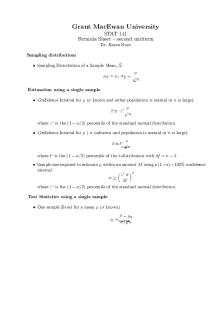
Lecture notes, lecture formula 2
- 1 Pages

2 Biodiversity - Lecture notes 2
- 33 Pages

Chapter 2 - Lecture notes 2
- 30 Pages
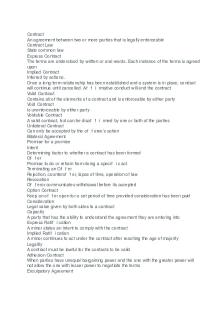
Blaw 2 - Lecture notes 2
- 4 Pages

Chapter 2 - Lecture notes 2
- 4 Pages
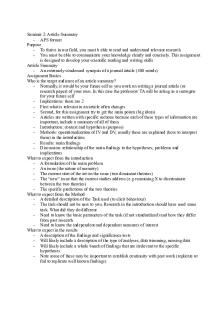
Seminar 2 - Lecture notes 2
- 2 Pages
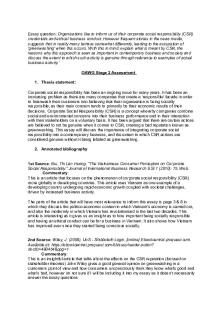
Stage 2 - Lecture notes 2
- 3 Pages
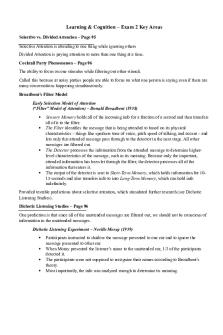
Exam 2 - Lecture notes 2
- 5 Pages

Lectia 2 - Lecture notes 2
- 3 Pages
Popular Institutions
- Tinajero National High School - Annex
- Politeknik Caltex Riau
- Yokohama City University
- SGT University
- University of Al-Qadisiyah
- Divine Word College of Vigan
- Techniek College Rotterdam
- Universidade de Santiago
- Universiti Teknologi MARA Cawangan Johor Kampus Pasir Gudang
- Poltekkes Kemenkes Yogyakarta
- Baguio City National High School
- Colegio san marcos
- preparatoria uno
- Centro de Bachillerato Tecnológico Industrial y de Servicios No. 107
- Dalian Maritime University
- Quang Trung Secondary School
- Colegio Tecnológico en Informática
- Corporación Regional de Educación Superior
- Grupo CEDVA
- Dar Al Uloom University
- Centro de Estudios Preuniversitarios de la Universidad Nacional de Ingeniería
- 上智大学
- Aakash International School, Nuna Majara
- San Felipe Neri Catholic School
- Kang Chiao International School - New Taipei City
- Misamis Occidental National High School
- Institución Educativa Escuela Normal Juan Ladrilleros
- Kolehiyo ng Pantukan
- Batanes State College
- Instituto Continental
- Sekolah Menengah Kejuruan Kesehatan Kaltara (Tarakan)
- Colegio de La Inmaculada Concepcion - Cebu



